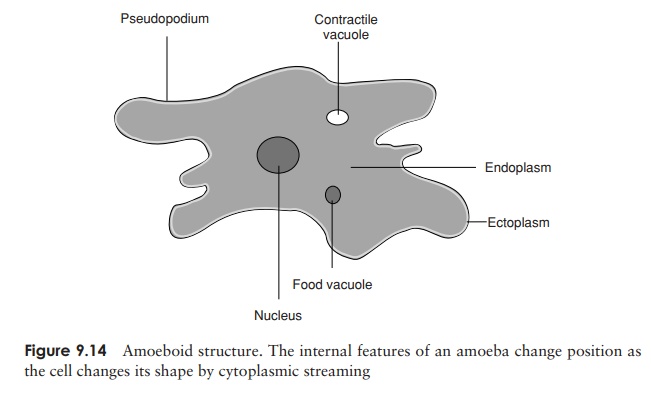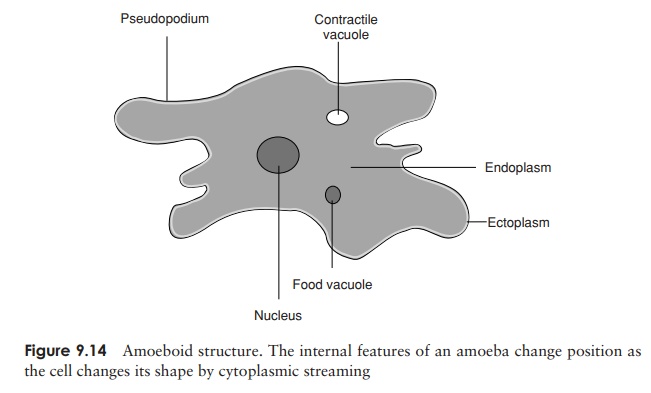Chapter: Essential Microbiology: Protista
Amoebas (Sarcodina) - Protozoa

The amoebas (Sarcodina)
The amoebas are characterised by the possession of pseudopodia (=‘false feet’), tem-porary projections from the cell into which cytoplasm flows until the organism has moved forward (Figure 9.14). This means that amoebas are continually changing their body shape and the position of their internal organelles. Pseudopodia are also used to capture and engulf food, forming a vacuole around it. Once again, digestive enzymes are released from lysosomes and the food particle dissolved. Once absorption of soluble nutrients has taken place, undigested waste is ejected by the vacuole moving back to the cell surface.

Reproduction in the amoebas is by simple binary fission. Most amoebas are free-living, in aquatic environments; their mode of movement and feeding makes them well adapted to life on the bottom of ponds and lakes, where there is a good supply of prey organisms and suspended organic matter. Also included in the group, however, are some important parasites, including Entamoeba histolytica, which causes amoebic dysentery
Amoebas with external shells: Foraminifera and Radiolaria
Some types of amoeba have an external shell covering the cell. The Foraminifera secrete a shell of protein coated with calcium carbonate; their shells are covered with pores through which their long, filamentous pseudopodia project. Some foraminiferans are zooplankton, microscopic organisms living at the surface of the sea, while others are bottom-dwellers. It is the discarded shells of countless long-dead creatures such as these that make up deposits of limestone many hundreds of metres in depth. Many thousands of shells are needed to form just 1 g of such a deposit! The White Cliffs of Dover are an example of a limestone deposit made up largely of foraminiferan shells.
The outer surface of radiolarians is composed of silica, which again is perforated to allow the passage of many very fine pseudopodia.
Related Topics